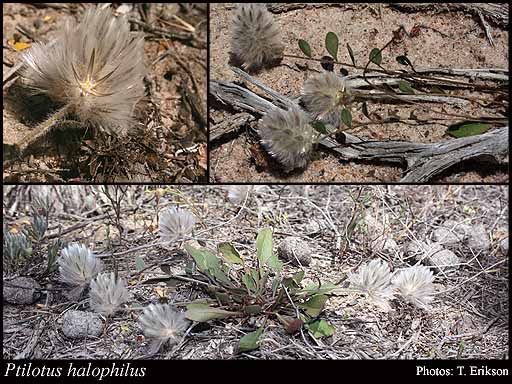- Reference
- Nuytsia 15(2):224-226,Fig.3 (2004)
- Conservation Code
- Not threatened
- Naturalised Status
- Native to Western Australia
- Name Status
- Current
Prostrate to decumbent tuberous, perennial, herb, to 0.08 m high. Fl. white/green, Jun to Oct. Grey sand, saline. Sand dunes surrounding salt lakes. Open mallee woodlands.

Scientific Description
Perennial herbs, stems several, more or less prostrate, glabrescent, with verticillate hairs. Leaves present, 8-65 mm long, 2-12 mm wide, glabrescent, with verticillate hairs; basal rosette present; cauline leaves alternate. Spikes green or white, ovoid or spherical, solitary, with densely arranged flowers. Bracts 6-7.5 mm long, coloured, hairy, not awned or mucronate, with an obscure midrib. Bracteoles 5-6 mm long, coloured or colourless, hairy, awned or mucronate, with a prominent midrib. Outer tepals 10-14 mm long, not entire. Inner tepals 8-12.5 mm long, glabrous within. Style 0.8 mm long, curved, obliquely fixed to ovary. Distribution: South West Botanical Region; IBRA regions: Avon Whealtbelt, Mallee.
Distribution
- IBRA Regions
- Avon Wheatbelt, Mallee.
- IBRA Subregions
- Merredin, Western Mallee.
- Local Government Areas (LGAs)
- Bruce Rock, Cunderdin, Dalwallinu, Greater Geraldton, Kent, Kondinin, Kulin, Morawa, Nungarin, Perenjori, Three Springs.